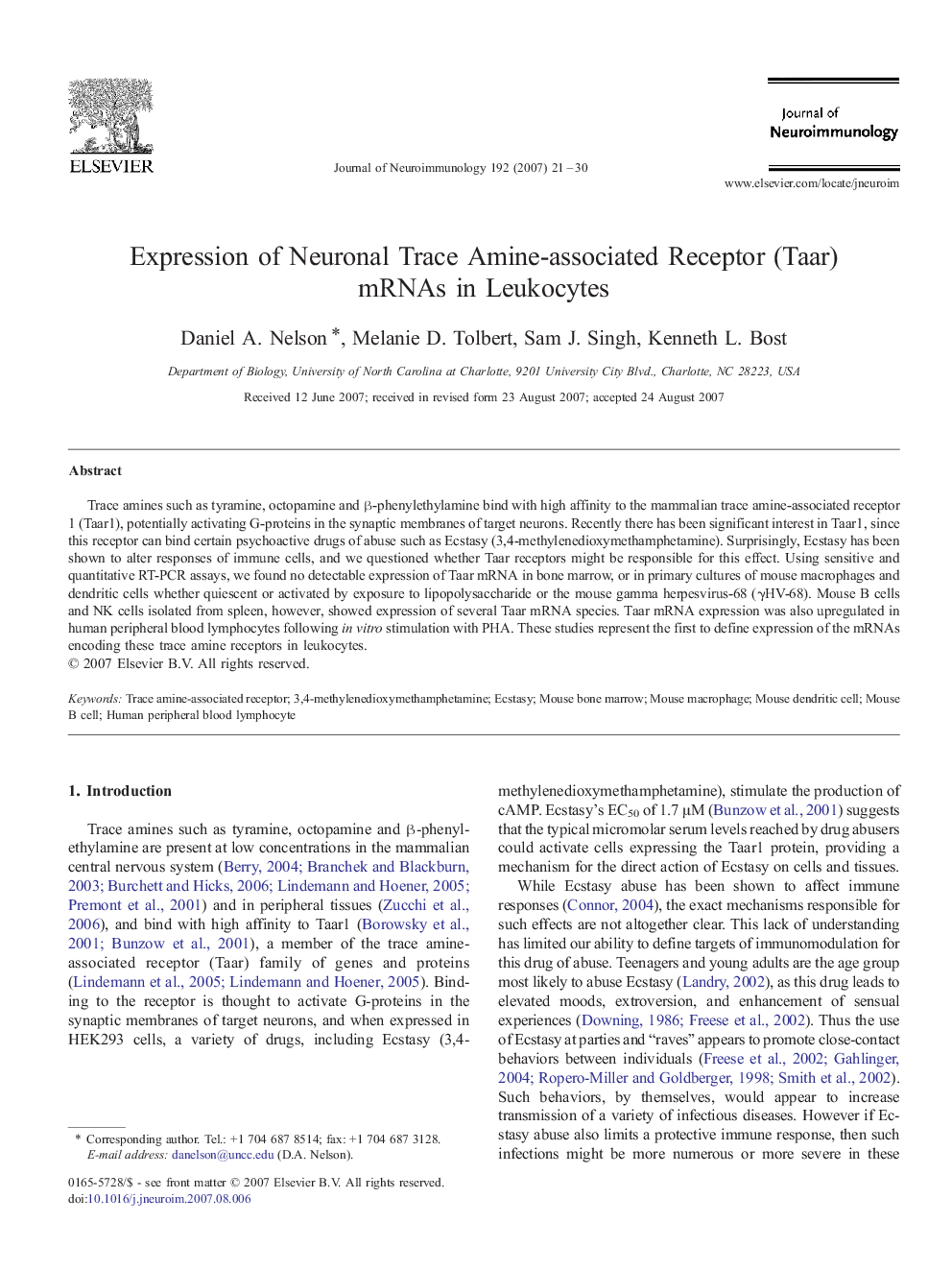| Article ID | Journal | Published Year | Pages | File Type |
|---|---|---|---|---|
| 3065309 | Journal of Neuroimmunology | 2007 | 10 Pages |
Trace amines such as tyramine, octopamine and β-phenylethylamine bind with high affinity to the mammalian trace amine-associated receptor 1 (Taar1), potentially activating G-proteins in the synaptic membranes of target neurons. Recently there has been significant interest in Taar1, since this receptor can bind certain psychoactive drugs of abuse such as Ecstasy (3,4-methylenedioxymethamphetamine). Surprisingly, Ecstasy has been shown to alter responses of immune cells, and we questioned whether Taar receptors might be responsible for this effect. Using sensitive and quantitative RT-PCR assays, we found no detectable expression of Taar mRNA in bone marrow, or in primary cultures of mouse macrophages and dendritic cells whether quiescent or activated by exposure to lipopolysaccharide or the mouse gamma herpesvirus-68 (γHV-68). Mouse B cells and NK cells isolated from spleen, however, showed expression of several Taar mRNA species. Taar mRNA expression was also upregulated in human peripheral blood lymphocytes following in vitro stimulation with PHA. These studies represent the first to define expression of the mRNAs encoding these trace amine receptors in leukocytes.
